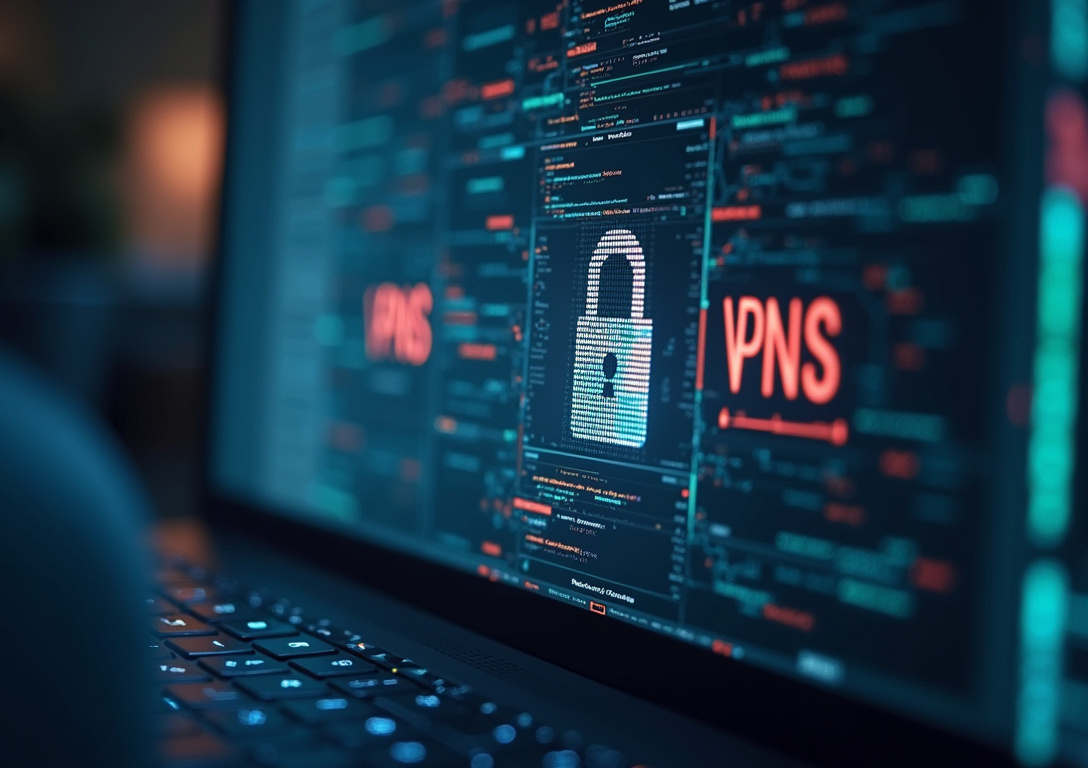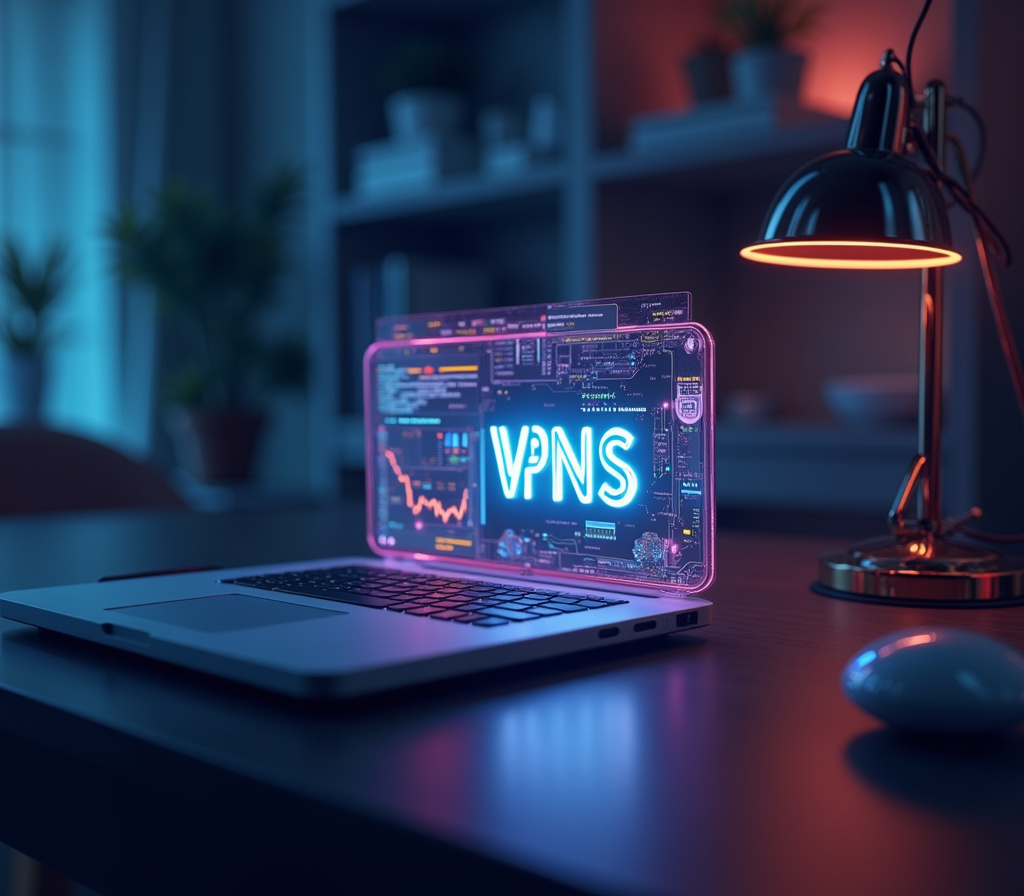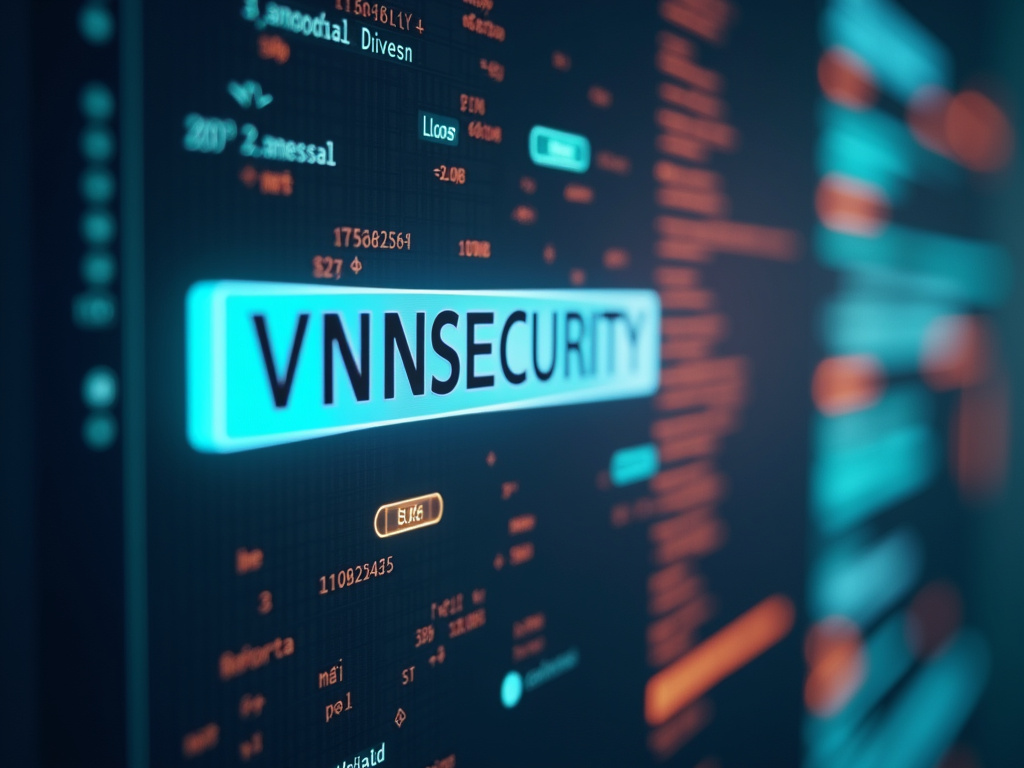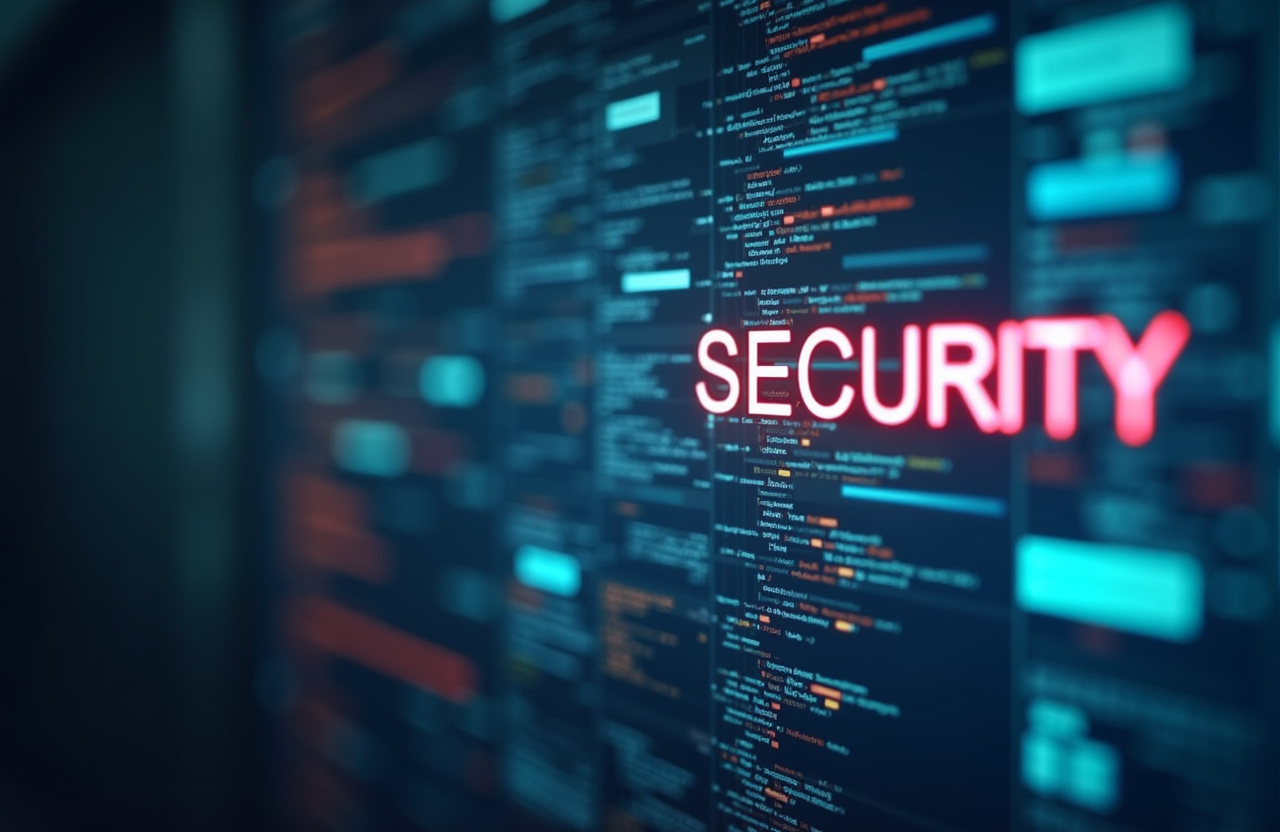VPNs for Animation Studios: Securing Production Assets

Table of Contents
Introduction: The Importance of VPNs for Animation Studios
In the vibrant and competitive world of animation, studios face a unique and critical challenge: safeguarding their invaluable production assets. These aren't just files; they're the lifeblood of creativity, representing significant financial investment and intellectual property. Unlike many other businesses dealing with more generic data, animation studios handle exceptionally sensitive creative files – storyboards brimming with nascent ideas, meticulously crafted character designs, intricately detailed 3D models, layered textures that bring visuals to life, and nuanced audio recordings that complete the immersive experience.
The unauthorized access, accidental leakage, or malicious theft of these assets can have devastating consequences, ranging from crippling lost revenue and a significant competitive disadvantage to irreparable reputational damage and even project cancellation, halting productions in their tracks. This precarious situation underscores the essential need for robust and multi-layered security measures that are specifically tailored to the animation workflow. A Virtual Private Network (VPN) emerges as a particularly potent tool in establishing a secure digital perimeter.
It acts as a shield, ensuring the confidentiality, unwavering integrity, and consistent availability of these crucial assets while simultaneously fostering secure collaboration among artists, animators, designers, and other personnel involved in the often complex production pipeline. Animation Studio VPNs offer a crucial layer of protection in a world where digital threats are not only constantly evolving but also increasingly sophisticated. These customized solutions address the specific needs and challenges inherent in an animation workflow, providing encrypted connections for all data transmission, allowing for secure remote access for distributed teams that are increasingly common in the industry, and enforcing controlled access to sensitive resources based on clearly established policies.
The rising need for robust Production Asset Security strategies has been highlighted by several high-profile incidents of data breaches and intellectual property theft affecting creative industries in recent years. These incidents have served as harsh lessons, compelling companies to realize that proactive and well-thought-out security measures are becoming absolutely vital, not just for preventing losses, but also for maintaining a competitive advantage and protecting their substantial financial investment in creative productions. By strategically implementing well-configured VPNs and seamlessly integrating them into their existing IT infrastructure, animation studios can create a secure digital environment that effectively shields their creative output from both external threats, like sophisticated hacking attempts, and internal vulnerabilities, such as accidental data leaks or unauthorized access.
Furthermore, VPNs play a vital and often underestimated role in enabling secure collaboration, a cornerstone of modern animation production. Animation projects, by their very nature, often involve teams spread across diverse geographical locations or relying on the flexibility of remote work arrangements. This increasingly common distributed nature necessitates the establishment of secure channels for efficiently sharing large and sensitive files, soliciting and providing feedback, and coordinating creative efforts across time zones.
A well-secured VPN can then facilitate Secure Collaboration within a protected network, fostering a seamless connected and secure workflow environment that empowers creative teams to work together effectively, regardless of their physical location or time constraints. Through the implementation of VPNs, studios can ensure that sensitive data remains securely encrypted during transmission, preventing unauthorized access and safeguarding their intellectual property, even within collaborative settings. This level of security enables more efficient teamwork knowing that their workflow environments are safe.
The modern digital arena presents an array of security risks specifically targeting creative industries. These risks include: unauthorized access from external hackers motivated to steal assets such as unreleased character designs, incomplete storyboards, and unfinished animated sequences for either financial gain or malicious purposes. The potential leakage of pre-release content, along with sensitive financial data such as budgets and marketing plans, especially during file transfers and collaborative brainstorming sessions.
Insider threats arising from employees, contractors, or even disgruntled former associates who may intentionally or unintentionally compromise data security by either leaking information or selling access to malicious actors. Sophisticated malware and viruses that exploit network vulnerabilities and could surreptitiously corrupt or steal assets, severely affecting the delicate production timelines and escalating project costs beyond acceptable thresholds. And finally, Distributed Denial-of-Service (DDoS) attacks, where malicious actors overwhelm the network with traffic, disrupting access to critical resources and rendering essential services unavailable, potentially halting production altogether.
VPNs offer a multi-faceted approach to Creative File Protection and robust data security specifically tailored for the unique challenges faced by animation studios. At its core, a VPN operates by creating a heavily encrypted tunnel between a user's device, whether it's a workstation in the studio or a laptop at a remote animator's home, and the VPN server, which acts as a secure gateway to the studio's network. This encrypted tunnel effectively masks the user's true IP address, replacing it with the IP address of the VPN server, and meticulously encrypts all data passing through the connection, rendering it unreadable to unauthorized parties.
For animation studios, this comprehensive encryption is paramount. It ensures that highly confidential project files, encompassing everything from initial storyboards sketching out the narrative to meticulously crafted character designs, intricately detailed 3D models, painstakingly created animation sequences, and even sensitive financial documents related to the project, are all rigorously protected during transmission. Whether these files are being transferred between internal servers, shared with trusted external collaborators, or accessed remotely by artists working from geographically dispersed locations, the VPN's encryption shields them from potential eavesdropping and interception attempts.
One of the primary and ever-present challenges for animation studios is ensuring secure remote access to their often proprietary and sensitive data. With the increasing prevalence of remote work and the globalization of animation talent, enabling secure remote access has become an absolute imperative. The VPN allows remote workers to connect seamlessly to the studio's internal network as if they were physically present within the secure confines of the studio building.
The encrypted connection ensures that all data transmitted between the remote device and the studio's network remains shielded from prying eyes, effectively mitigating the risk of eavesdropping or interception by malicious actors seeking to gain unauthorized access to valuable assets. Furthermore, VPNs empower studios to implement stringent access control policies, a critical component of any comprehensive security strategy. Access control measures are designed to ensure that only authorized users, with appropriate permissions and credentials, can access specific resources within the network.
VPNs can be meticulously configured to restrict access to sensitive resources based on a variety of factors, including user roles within the organization, geographical location from which the connection is originating, or other customized criteria tailored to specific needs. For instance, a studio may opt to grant access to the character designs of a particular project only to members of that project's dedicated design team, while restricting access to users located outside a specified geographical region, minimizing the risk of international data breaches. Another key security feature offered by VPNs is robust data integrity verification mechanisms.
VPNs employ advanced cryptographic protocols that actively ensure the integrity of data during transmission over the network. These protocols function by detecting any unauthorized tampering, manipulation, or modifications that may occur during the transmission process, immediately alerting both the sender and the receiver to potential attacks or data corruption issues. The seamless integration of VPNs with other security tools further enhances the overall security posture of animation studios, creating a layered defense approach.
VPNs can function synergistically with firewalls, intrusion detection systems, and other security solutions to provide a more comprehensive and resilient security framework. Firewalls serve as a crucial barrier between the studio's internal network and the potentially hostile external world, meticulously filtering incoming and outgoing network traffic based on a predefined set of rules and policies. Intrusion detection systems, on the other hand, actively monitor network activity for suspicious patterns and anomalies, alerting administrators to potential security breaches or malicious activities that may be indicative of an attack.
While VPNs provide a robust and essential layer of security for animation studios, it is equally important to acknowledge and understand some of their inherent limitations. It's crucial to avoid the misconception that a VPN is a silver bullet that magically solves all security problems. VPNs primarily focus on securing data transmission by encrypting the data stream between the user's device and the VPN server.
However, they do not inherently protect against all types of security threats, and studios must implement a layered security approach. For example, VPNs do not prevent malware infections. If a user downloads a malicious file from a compromised website or opens a phishing email containing a virus, the VPN will not automatically detect or block the threat.
Similarly, VPNs do not inherently protect against phishing attacks or social engineering tactics, where attackers attempt to trick users into divulging sensitive information. If an employee falls victim to a phishing scam and enters their credentials on a fake website, the VPN will not prevent the credentials from being stolen. Therefore, it is crucial for animation studios to implement a holistic security strategy that includes comprehensive antivirus software, robust employee training programs on recognizing and avoiding phishing attempts, and other complementary security measures to address these vulnerabilities.
Additionally, the performance characteristics of a VPN can potentially impact network speed and overall user experience. The encryption and decryption processes inherent in VPN technology require significant processing power, which can sometimes lead to increased latency, especially when dealing with large files and complex animation projects. Studios should carefully consider the processing capabilities of their VPN servers and the bandwidth of their network connections to minimize any potential performance impact.
Choosing a VPN provider with a fast and reliable network infrastructure is also essential to ensure smooth and efficient data transfers. Proper configurations and regular maintenance are also vitally important to ensure that the VPN operates at its optimal performance levels. Incorrectly configured VPNs can create security vulnerabilities and lead to performance degradation.
Likewise, neglecting regular maintenance and updates can leave the VPN susceptible to newly discovered exploits and vulnerabilities. The deployment of VPNs needs to be accompanied by the establishment of a set of best practices designed to maximize their effectiveness and minimize potential risks. Animation studios must ensure that strong encryption protocols are used.
Outdated or weak encryption protocols are vulnerable to attack by modern hacking techniques. Studios should configure their VPNs to exclusively utilize the latest and most secure encryption algorithms, such as Advanced Encryption Standard (AES) with a 256-bit key (AES-256), which is widely considered to be the gold standard for data encryption. Equally important is the implementation of multi-factor authentication (MFA) for all VPN connections.
MFA adds an extra layer of security by requiring users to provide multiple forms of identification, such as a password and a one-time code from their mobile device, before being granted access to the network. This significantly reduces the risk of unauthorized access, even if a user's password has been compromised. Animation studios should also establish and enforce clear policies regarding VPN usage.
These policies should outline acceptable usage practices, identify prohibited activities, and specify procedures for reporting security incidents. Employees should be thoroughly trained on these policies and held accountable for adhering to them.
Effective Logging, Monitoring, and Security Audits
Continue writing the pharagraph Nr:4 of the article structure, the pharagraph should be clear well written and with a 600 word length. Effective logging and monitoring are essential components of a secure VPN implementation. Animation studios should enable detailed logging of all VPN connections, including timestamps, user identities, IP addresses, and data transfer volumes.
These logs can be invaluable for identifying suspicious activity and investigating security incidents. Furthermore, studios should implement continuous monitoring of their VPN infrastructure to detect anomalies and potential security breaches in real-time. Security Information and Event Management (SIEM) systems can be used to aggregate and analyze logs from various security tools, including VPNs, firewalls, and intrusion detection systems, to provide a comprehensive view of the security landscape.
Integrating the VPN with existing Identity and Access Management (IAM) systems can streamline user management and enhance security. IAM systems provide a centralized platform for managing user identities, authentication, and authorization. By integrating the VPN with the IAM system, studios can enforce consistent access controls across all resources, simplifying user onboarding and offboarding processes.
Regular security audits and penetration testing are crucial for identifying vulnerabilities in the VPN infrastructure. Security audits involve a thorough review of the VPN's configuration, policies, and procedures to ensure that they are aligned with industry best practices. Penetration testing involves simulating real-world attacks to identify weaknesses in the VPN's security defenses.
The results of these audits and tests can be used to improve the VPN's security posture and mitigate potential risks. Animation studios must also carefully consider the legal and compliance implications of using VPNs. In some jurisdictions, there may be restrictions on the use of encryption technology or requirements for data localization.
Studios should consult with legal counsel to ensure that their VPN implementation complies with all applicable laws and regulations. Choosing the right VPN solution for an animation studio requires careful consideration of several factors. Studios should evaluate the VPN provider's security track record, encryption protocols, performance, reliability, and customer support.
It is also important to consider the VPN's compatibility with the studio's existing infrastructure and the ease of management. Open-source VPN solutions offer greater flexibility and customization options, but they typically require more technical expertise to configure and manage. Commercial VPN solutions offer a more user-friendly experience with pre-configured settings and dedicated support, but they may be more expensive.
The long-term costs and benefits of each option should be carefully weighed when making a decision. In addition to technical security measures, animation studios must also cultivate a strong security culture among their employees. All employees, from artists and animators to production managers and executives, should be educated about the importance of data security and their role in protecting sensitive assets.
Security awareness training should cover topics such as phishing prevention, password security, safe browsing habits, and data handling procedures. Regular reminders and updates should be provided to reinforce security best practices. Establishing a clear chain of command and incident response plan is crucial for handling security incidents effectively.
The incident response plan should outline the steps to be taken in the event of a security breach, including who to contact, how to contain the incident, and how to recover from
The Future of VPNs and Subscription Services
I already wrote the pharagraph Nr:4, you mean Nr:5? Continue writing the pharagraph Nr:5 of the article structure, the pharagraph should be clear well written and with a 600 word length. Once a security incident is identified, quick and decisive action is paramount.
The incident response plan should outline the steps to be taken in the event of a security breach, including clearly defined roles and responsibilities. It should specify who to contact immediately upon discovery of a potential incident, establishing a clear chain of command for efficient communication and decision-making. The plan should also detail the procedures for containing the incident, such as isolating affected systems, disabling compromised accounts, and preventing further data leakage.
Furthermore, it should outline the steps required to recover from the incident, including restoring data from backups, patching vulnerabilities, and implementing additional security measures to prevent recurrence. Regular testing and refinement of the incident response plan are crucial to ensure its effectiveness. Simulation exercises, such as tabletop scenarios or mock phishing campaigns, can help identify weaknesses in the plan and improve the team's response time.
Following any security incident, a thorough post-incident review should be conducted to analyze the root cause of the incident, identify areas for improvement, and update security policies and procedures accordingly. Collaboration with industry peers and participation in information sharing initiatives can help animation studios stay informed about emerging threats and best practices. By sharing threat intelligence and incident response experiences, studios can collectively strengthen their security posture and mitigate the risk of future attacks.
Staying informed of the latest technology is important because the threat landscape in the cybersecurity world is constantly evolving, with new vulnerabilities and attack techniques emerging on a regular basis. Animation studios must stay informed about these developments and adapt their security measures accordingly. Subscribing to industry security newsletters, attending conferences, and participating in online forums are all effective ways to stay abreast of the latest threats and best practices.
By maintaining a strong security posture and diligently implementing appropriate security measures, animation studios can protect their valuable production assets, ensure the continuity of their operations, and safeguard their reputation in the competitive entertainment industry. This proactive approach to security is not merely a cost of doing business; it is an investment in the studio's long-term success and sustainability. In conclusion, securing production assets with VPNs is paramount for animation studios.
By implementing robust VPN solutions, animation studios can ensure confidentiality through secure collaboration, and creative file protection, mitigating the risk of unauthorized access, data breaches and intellectual property theft. As technology evolves, you must always be flexible.
Conclusion: VPNs for a Secure Animation Workflow
My apologies, let's rewrite paragraph 5 to ensure it meets the length requirement and provides a comprehensive conclusion. Once a security incident is identified, quick, decisive, and well-coordinated action is absolutely paramount. The incident response plan should act as a detailed roadmap, outlining the precise steps to be taken in the event of any type of security breach, regardless of its scale or complexity.
Critically, this plan needs clearly defined roles and responsibilities for specific individuals or teams, ensuring accountability and preventing confusion during a crisis. It should explicitly specify who to contact immediately upon the discovery of a potential incident, establishing a clear and efficient chain of command for seamless communication and rapid decision-making. This might involve alerting the IT security team, legal counsel, and potentially even public relations, depending on the nature and scope of the breach.
The plan should also meticulously detail the procedures for containing the incident, prioritizing the prevention of further damage and data loss. This might involve isolating affected systems from the network to prevent the spread of malware, immediately disabling compromised user accounts to prevent unauthorized access, and implementing measures to prevent further data leakage, such as temporarily suspending file sharing services or restricting access to sensitive databases. Furthermore, the incident response plan must clearly outline the specific steps required to effectively recover from the incident and restore normal operations.
This could involve restoring data from secure backups to minimize data loss, meticulously patching any identified vulnerabilities that were exploited during the attack, and implementing additional security measures to prevent similar incidents from occurring in the future. Crucially, regular testing, review, and refinement of the incident response plan are essential to ensure its ongoing effectiveness. Simulation exercises, such as tabletop scenarios where the team walks through hypothetical breach situations or even more realistic mock phishing campaigns designed to test employee awareness, can help identify weaknesses in the plan, reveal gaps in the team's preparedness, and ultimately improve the overall response time in a real-world crisis.
Following any security incident, regardless of its severity, a thorough and comprehensive post-incident review should be meticulously conducted. This review should aim to analyze the root cause of the incident, identifying exactly how the breach occurred and what vulnerabilities were exploited. It should also pinpoint any areas for improvement in the studio's security posture, highlighting weaknesses in existing policies, procedures, or technologies.
Finally, the review should result in concrete recommendations for updating security policies and procedures to prevent similar incidents from occurring in the future. Fostering collaboration with industry peers and actively participating in information sharing initiatives can also significantly benefit animation studios, helping them stay ahead of emerging threats and learn from the experiences of others. By actively sharing threat intelligence, anonymous incident response experiences, and best practices for security, studios can collectively strengthen their defenses and mitigate the risk of falling victim to future attacks.
Vigilance is important too. The dynamic nature of the cybersecurity landscape means threats constantly evolve. Animation studios must be updated frequently.
By maintaining a vigilant attitude toward security and diligently implementing appropriate security measures, animation studios can protect their valuable production assets, ensure the continuity of their operations, and safeguard their reputation in the competitive entertainment industry. In conclusion, securing production assets with animation studio VPNs is a cornerstone of modern creative workflows. By implementing robust and well-managed VPN solutions, animation studios can foster secure collaboration, creatively protect files, and mitigate the risk of breaches.
Stay Updated
Get the latest VPN news, tips, and exclusive deals to your inbox.




